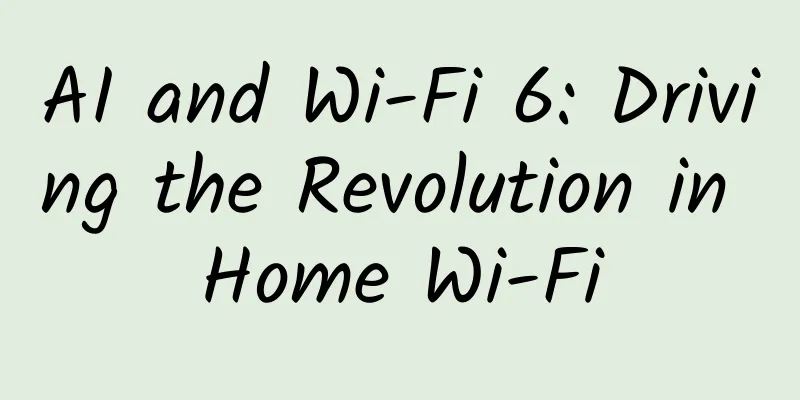The inheritance of mobile communications from the 1G era

|
This article is reprinted from the WeChat public account "Wireless Deep Sea", written by Fei Caicai. Please contact the Wireless Deep Sea public account to reprint this article. Under the cover of night, a group of thugs armed with weapons brazenly smashed and burned a newly built 5G base station. And the cause of all this is simply because of a statement that "5G causes COVID-19". This absurd rumor that originated in the United States caused an uproar in the United Kingdom, France and the Netherlands across the ocean, and many 5G base stations suffered tragic disasters. These people may have long forgotten that it was on the land where they stood that the spark of mobile communications was first ignited, and it has rapidly developed from 1G to 5G in a few decades, profoundly changing the way of life of mankind. However, the towering trees that were forged by the spark of fire at that time have now been inexplicably burned into ruins. The vicissitudes of life in this are really heartbreaking. We will not talk about 5G in this issue. Instead, I will take you through the mist of history and recall the spark of the 1G era. budIn fact, the prototype of mobile phones appeared as early as World War II. But like other emerging technologies, they were first used for military purposes and then gradually opened up to civilian use. In 1946, car phones were first commercially available in the United States and continued to be improved and popularized in the 1960s, known as "Improved Mobile Telephone Service (IMTS)." Wow, the whole car is equivalent to a large mobile phone! However, it doesn't allow you to make calls while driving at full speed. It's just an extension of the wired network and doesn't have any decent mobility management. That is to say, if you are making a call under this base station and your car is out of coverage, you can only watch the call being disconnected and have to redial and get connected manually again. Such a simple system is certainly not worthy of being called 1G, so we call it 0G or Pre1G. In 1971, Finland also commercialized a car phone system called ARP, which worked in the 150MHz frequency band. The calls could only be connected manually, and there was no decent mobility management function. Therefore, this technology can only be classified as 0G. BirthIn 1979, Japan's NTT company commercialized a brand new car phone system, which is considered the world's first true 1G technology. They are both car phones, so why did this one win the groundbreaking honor of 1G? This is because it has the following innovations compared to its simple predecessors: 1. This is a mobile cellular network consisting of 88 base stations that covers the entire Tokyo area. And it can work independently and is no longer an extension of the wired network. 2. The call is automatically connected by the system and no longer relies on manual labor like previous systems. 3. Full support for switching. The car phone can freely navigate under multiple base stations within the network coverage area without worrying about dropped calls. The system will automatically switch the phone to the best service base station. These characteristics were later naturally inherited by 2G, 3G, 4G, and even 5G, and this system is well deserved to be respected as the ancestor of 1G. ProsperityIn 1981, Norway and Sweden commercialized their 1G system: NMT (Nordic Mobile Telephone). Denmark and Finland followed closely and commercialized the NMT system in 1982. The standard then quickly spread to Saudi Arabia, Russia, the Baltics, and several Asian countries. In 1983, AMPS (Advanced Mobile Phone System) was commercialized in the United States. Invented by Martin Cooper, the first real mobile phone manufactured by Motorola was also launched at the same time. In 1985, TACS (Total Access Communication System) was put into commercial use in the UK and later upgraded to ETACS. Subsequently, Japan's DDI also launched the JTACS system based on this. In 1987, China's Ministry of Posts and Telecommunications also launched the first mobile network using the TACS standard. In addition, similar 1G systems around the world include C-450 in Germany, Portugal and South Africa, Radiocom 2000 in France, TMA in Spain, RTMA in Italy, and TZ-801, TZ-802, and TZ-803 in Japan, etc. From then on, mobile communications entered the Spring and Autumn Period of 1G, with warlords fighting for power and smoke of war raging everywhere. And mobile phones, which we feel more deeply, have also begun to evolve independently after breaking away from the stereotype of cars, with a hundred flowers blooming and competing for beauty. This is what the mobile phone launched by Telekom Malaysia looks like. It looks like a normal phone with a handle attached after the cord is unplugged. The designer is really lazy. In contrast, the Japanese are much more particular. The "shoulder phone" launched by NTT has made LV and Hermes call it an expert. RetreatThis 1G empire divided among various warlords seemed prosperous, but it was ultimately just the infancy of mobile communications, and the limitations brought about by the primitive technology were enormous. 1. The full analog communication mode has limited coverage, poor sound quality, and does not support encryption, which is equivalent to everyone running naked. 2. Each system uses a different frequency, and the capacity of FDMA technology is extremely low, making it difficult to effectively utilize the spectrum. 3. Different 1G systems are completely independent of each other, incompatible and non-interoperable, and cannot support roaming between operators. In addition, mobile phones in the 1G era were called "big brothers". Although they were cool, they weighed 6 to 8 kilograms and were extremely expensive. Therefore, 1G mobile phones became a symbol of social status, and only wealthy people such as corporate executives, government officials, and gang bosses could afford them. These shortcomings determine that the life cycle of 1G is short. In fact, as early as 1G was gaining ground, the undercurrent of 2G had been brewing for a long time. In 1991, the first 2G system GSM was officially put into commercial use in Finland, and the 1G era came to an end. 1G, as the initial spark of mobile communications, ignited a raging fire and then turned into nutrients to nourish the earth, welcoming the growth of towering trees on it. |
>>: Don’t listen to the merchants’ lies: WiFi signals can’t actually penetrate walls
Recommend
A brief analysis of the Time Sensitive Network (TSN) technology for deterministic networks
Author: Lu Yingchuan, unit: China Mobile Smart Ho...
Ministry of Industry and Information Technology: Build 30 5G fully connected factories in 10 key industries by 2023
[[375916]] On January 12, a reporter from Cover N...
Attention! Eight pitfalls in managing integrated cabling systems
After nearly 20 years of development, the integra...
Building a streaming data lake using Flink Hudi
This article introduces how Flink Hudi continuous...
Major challenges and development trends of data center network technology in Internet projects
The network is the most stable part of the data c...
Regarding 2G network withdrawal, this article can be said to be very comprehensive
The withdrawal of 2G network is actually not a ne...
What do you think of the "5G is useless theory"? Communications industry netizens have something to say
Since the beginning of this year, 5G has become t...
5G will change my country's intellectual property landscape
"In addition to bringing wider, higher and s...
CloudCone: $14.11/year KVM-1GB/20GB/5TB/Los Angeles data center
CloudCone also launched promotions during the Dou...
DiyVM: 50% off VPS in the US/Japan/Hong Kong, 2G memory package for 50 yuan per month
DiyVM is an early Chinese hosting company, founde...
Moving forward amid challenges: A review of the top ten events in the 5G field in 2020
Time flies, and in the blink of an eye, 2020 has ...
What is Power over Ethernet (PoE) and what are its benefits?
Power over Ethernet (PoE) is a technology that tr...
LAN vs. WLAN: Connecting the Wired and Wireless Worlds
Local Area Networks (LAN) and Wide Area Networks ...
Performance Agreement: API Rate Limit
Rate limiting is a key control mechanism used to ...
6 SD-WAN Challenges and Benefits
Software-defined WAN (SD-WAN) has obvious advanta...









